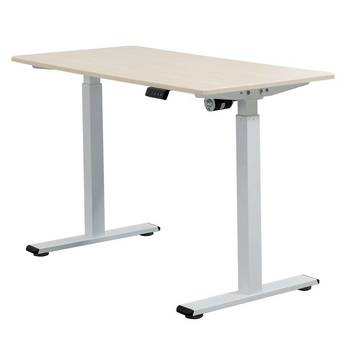Content
When it comes to withstanding the dual challenges of heavy rain and intense sunlight, the choice of material is the fundamental determinant of outdoor furniture's durability. Lightweight yet robust aluminum stands out as a top contender, boasting natural rust and corrosion resistance that remains intact even after years of exposure to the elements . Its surface, when treated with processes like powder coating or anodization, forms a protective barrier against ultraviolet rays, preventing fading and degradation . For those who prefer a natural aesthetic, synthetic rattan made from high-density polyethylene (HDPE) or PE offers a perfect balance of style and resilience—resisting cracking, mildew, and discoloration even after 200 hours of UV exposure .
Metal options like 304 stainless steel excel in harsh environments such as coastal areas, where salt spray poses a significant threat, thanks to their ability to pass rigorous salt mist tests . Solid wood enthusiasts need not compromise, as certain hardwoods with high oil content—such as teak—naturally repel moisture and insects, maintaining their luster for years with proper care . Recycled plastic lumber, crafted from repurposed HDPE, also emerges as an eco-friendly choice, offering zero-maintenance durability against both rain and sun .
What Craftsmanship Standards Ensure Long-Term Weather Resistance?
Superior materials alone are insufficient; meticulous craftsmanship is essential to unlock the full weather-resistant potential of outdoor furniture. For aluminum pieces, the thickness of the frame plays a critical role—structural components with a wall thickness between 1.2-2.0mm provide the necessary stability to resist warping under extreme temperatures . Welding and connection points must be smooth and secure, as these areas are most vulnerable to water infiltration and subsequent damage .
For synthetic rattan furniture, tight and uniform weaving not only enhances aesthetic appeal but also prevents moisture from seeping into the frame . High-quality pieces often feature an aluminum inner frame, combining the flexibility of rattan with the structural integrity of metal . Metal furniture, meanwhile, relies on thorough rust-proof treatments such as electrophoresis and high-quality baking paint, with special attention to hard-to-reach areas like welds and edges .
Surface finishes are equally crucial: powder coating for aluminum must be evenly applied with strong adhesion, while wooden furniture requires proper seasoning and anticorrosion treatment to seal pores and prevent water absorption . Hardware components should meet marine-grade standards to resist corrosion, ensuring that joints remain sturdy despite constant exposure to rain and humidity .
How to Combine Comfort and Weather Resistance in Patio Furniture?
Durability need not come at the expense of comfort—thoughtful design can create outdoor furniture that withstands the elements while providing a cozy seating experience. Seat cushions and upholstery play a key role here, with fabrics like PTFE microporous material offering water-repellent properties that cause rain to bead up and roll off . Inner cores made of honeycomb quick-dry foam can regain dryness within two hours, eliminating the dampness associated with traditional sponge cushions .
Woven vinyl-coated polyester sling fabric strikes an ideal balance between breathability and durability, resisting mildew, tearing, and fading . For wooden furniture, ergonomic designs that follow the body's curves enhance comfort without compromising structural stability . Even heavy materials like 12mm sintered stone tabletops, which offer exceptional heat and scratch resistance, can be paired with lightweight frames for practicality .
Style and functionality can coexist harmoniously: aluminum furniture's sleek lines complement modern aesthetics, while synthetic rattan's natural texture adds warmth to outdoor spaces . Foldable designs, particularly those crafted from aviation grade aluminum, offer versatility for camping or small patios, allowing for easy storage during extreme weather .
What Maintenance Practices Extend the Lifespan of Weather-Resistant Furniture?
While weather-resistant furniture is designed to withstand the elements, proper maintenance can significantly prolong its lifespan. Aluminum pieces benefit from semi-annual cleaning with mild detergent and water, avoiding harsh acidic cleaners that can damage the protective coating . Synthetic rattan can be wiped down with a damp cloth or soft brush to remove dust and debris, with bird droppings or stubborn stains cleaned promptly with alcohol .
Wooden furniture requires regular care—annual application of outdoor wood oil nourishes the material, preserving its color and preventing cracking . During prolonged rainy seasons, cushions should be stored indoors or covered to prevent mold growth, even if they feature quick-dry technology . While many weather-resistant materials can withstand continuous exposure, using furniture covers during extreme weather events like hurricanes or blizzards simplifies cleaning and adds an extra layer of protection .
Avoiding common pitfalls is also important: refraining from placing hot objects directly on unprotected surfaces, keeping furniture away from sharp edges that could scratch protective coatings, and not using abrasive cleaners that can wear down finishes . For coastal areas, regular rinsing with fresh water can remove salt deposits that accelerate corrosion .
Conclusion: Investing in Timeless Outdoor Enjoyment
Choosing outdoor patio furniture that lasts through rain and sun is an investment in years of outdoor enjoyment. By prioritizing high-quality materials, rigorous craftsmanship, and thoughtful design, homeowners can create outdoor spaces that remain functional and beautiful regardless of the weather. Whether opting for the lightweight durability of aluminum, the natural charm of synthetic rattan, the warmth of hardwood, or the eco-friendliness of recycled plastic, the key lies in understanding the unique properties of each material and matching them to local climate conditions.
With proper maintenance, weather-resistant outdoor furniture transcends seasonal limitations, transforming patios, decks, and gardens into year-round retreats. By asking the right questions about materials, craftsmanship, comfort, and care, consumers can make informed decisions that balance practicality and style—ensuring that their outdoor furniture remains a source of joy for years to come.

 English
English 中文简体
中文简体 日本語
日本語 한국어
한국어 Español
Español
 Language
Language












